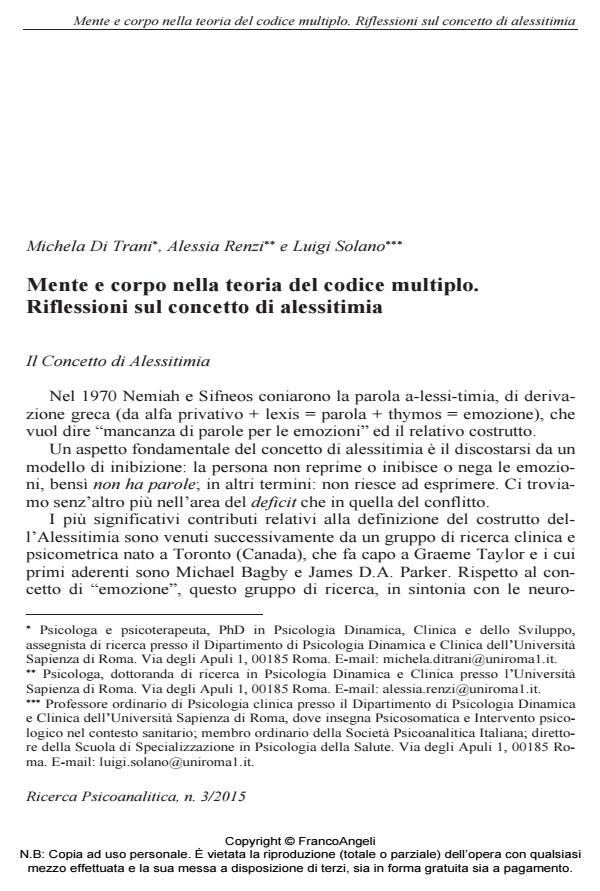Mind and body in multiple code theory. reflections on the concept of alexithymia
Journal title RICERCA PSICOANALITICA
Author/s Michela Di Trani, Alessia Renzi, Luigi Solano
Publishing Year 2015 Issue 2015/3
Language Italian Pages 14 P. 105-118 File size 76 KB
DOI 10.3280/RPR2015-003008
DOI is like a bar code for intellectual property: to have more infomation
click here
Below, you can see the article first page
If you want to buy this article in PDF format, you can do it, following the instructions to buy download credits

FrancoAngeli is member of Publishers International Linking Association, Inc (PILA), a not-for-profit association which run the CrossRef service enabling links to and from online scholarly content.
Alexithymia has been defined as a difficulty in identifying and describing feelings, a diminished introspective capacity and a constricted imagination. Currently it has been proposed to use the Multiple Code Theory developed by Wilma Bucci in the conceptualization of alexithymia. The alexithymic condition would correspond to a dissociation between the subsymbolic system and the two symbolic systems, which would result in not having words for emotions. This definition implies, in relation to the concept of alexithymia and to the relationship between mind and body, a complete overcome of the mind/body dualism in the health/disease dynamics that involve affect regulation, and a theoretical confirmation that alexithymia arises in a deficit area rather than in defensiveness, representing a risk factor for the development of both physical and mental diseases.
Keywords: Alexithymia, multiple code theory, relationship between mind and body
- Commento al caso clinico di A. Micheloni Giuseppe Martorana, in Ricerca Psicoanalitica /2021
DOI: 10.4081/rp.2021.536
Michela Di Trani, Alessia Renzi, Luigi Solano, Mente e corpo nella teoria del codice multiplo. Riflessioni sul concetto di alessitimia in "RICERCA PSICOANALITICA" 3/2015, pp 105-118, DOI: 10.3280/RPR2015-003008